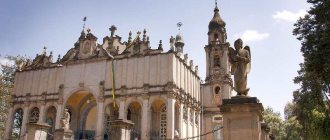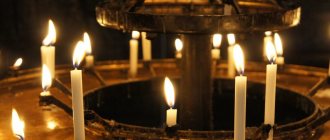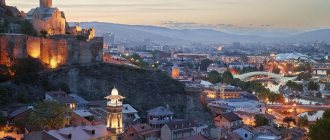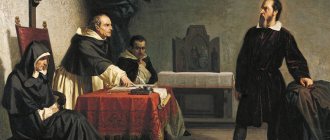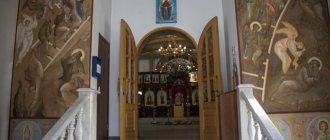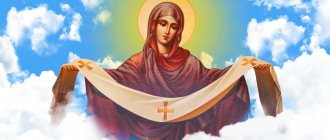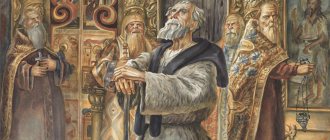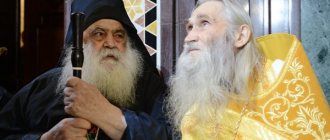The Greeks belong to an Indo-European ethnic group formed as a people in the southeast of the European continent. This is the indigenous population of Greece. The people have a rich history dating back centuries. Greek mythology has had a huge influence on the development of culture and art throughout the world. Myths about the deities of Olympus, written many centuries ago, are a national treasure.
Name
The self-name of the Greek nation is Hellenes. It came from the forefather of the Greeks, Hellin. This is a mythological character, the grandson of Prometheus. From the sons and grandsons of Hellen came the Greek tribes: Dorians, Aeolians, Ionians and Achaeans. The Greeks themselves call their country Hellas, the language Hellenic, and the religion Hellenism. Different peoples have different names for Greeks. In Asia, the name “Ionians” is common. In European countries, the state is called Greece, and the republic is called Hellenic, but the people are referred to as “Greeks”. In ancient times they were called “Achaeans”, “Romeans”.
Reflection in religion of inequality among the Greeks.
The Greeks thought that Zeus, Apollo and other major gods lived on the highest mountain of Greece - Olympus, and called them the "Olympian gods". There, on the top, covered with clouds, their luxurious palaces, built by Hephaestus, seem to stand.
The Greeks imagined the life of the gods on Olympus to be similar to the life of noble people. The gods seem to wear elegant clothes and often feast. Just as the families of noble people rule the tribes, so the family of the “Olympians”, led by Zeus, rules people and all of nature. The Greeks considered the gods to be as cruel, power-hungry and vengeful as noble people were.
The gods allegedly established the entire order of people’s lives: they made some rich and noble, others poor, and others slaves. Anyone who rebels against the order established by the gods will face their wrath and severe punishment.
Language
Greek is one of the smallest and most unique languages in the Indo-European group. The modern version of the language is presented in two variants: Kafarevusa and Dimotika. Dimotika is considered a colloquial variant that developed naturally from ancient Greek. Kafarevusa is a variety of Greek in which literary works are written. In the ancient world, there were a huge number of dialects of the Greek group, forming three branches: Western, Eastern and Central. Around the 15th century, the Modern Greek language was formed, which combines Kafarevusa, Dimotika and the standard dialect. Many areas of Greece have their own dialects, for example Cretan, Cypriot, Cappadocian, etc.
Gallery
- Church of Saint Andrew of Patras
- Catholic Church of Thessaloniki
- Catholic (Capucin) Church Chania
- Evangelical Church in Katerini
- Synagogue of Monastir (Thessaloniki)
- Synagogue Beth Shalom
- Evangelical Church, Athens
- Anglican Church of St. Paul in Athens (architect Stamatios Kleanthis)
- Ritual performed by the Supreme Council of Ethnic Hellenes
- Eski Mosque, Komotini
Religion
Before the advent of Christianity, Greece had a polytheistic religion. There were many different deities who patronized the natural elements and human activities (trade, war, love, etc.). There were also sacred animals. In the 1st century, Christian priests appeared and began to form their own churches. Gradually, all regions of Greece switched to Orthodoxy; now it is the main religion of the state. There are citizens who profess Catholicism and Islam, but they are a minority.
There are structures of the Catholic Church in Greece
Despite the fact that Orthodoxy, recognized as the state religion, dominates in Greece, the structures of the Catholic Church operate on Greek soil.
Moreover, before the division of the church in 1054, the structures of the Western Church of the Latin rite existed in Greece, and there was mutual recognition between the Latin and Byzantine rite communities.
After the church schism and the conquest of Greece by the Ottoman Empire, Greek Catholics began to be called “Franks.” After the conquest of Byzantium by the Ottoman Empire in 1453, the activities of Latin structures in Greece gradually ceased and the dioceses of the Latin rite became titular.
Church of the Immaculate Conception of the Blessed Virgin Mary, Thessaloniki, Greece. In addition to the Orthodox, there are also Catholics in Greece. Photo: upload.wikimedia.org
In 1830, a gradual restoration of Latin ecclesiastical structures began in Greece.
In 1856, a community of Greek Catholics of the Eastern Rite was formed in Constantinople, which became the basis of the Greek Catholic Church. In 1979, the Holy See established diplomatic relations with Greece.
200 thousand
how many Greek citizens consider themselves Catholics
In modern Greece, the Catholic Church has about 200,000 parishioners. These are mainly Polish and other immigrants from Eastern Europe, Western Europe and the Philippines.
Catholicism in Greece is represented by believers of the Roman Catholic, Greek and Armenian Catholic churches. Most Catholics live in Athens and other major Greek cities. Greek Catholics also live on the islands of the Cyclades archipelago, the islands of Syros and Tinos.
Story
In ancient times, the Greeks inhabited the central part of the Balkan Peninsula. Then they began to capture the Crimean regions and spread throughout the Mediterranean countries. Egypt, Palestine, and Syria came under their influence. They made up the majority of the population of the Eastern Roman Empire. In the 13th century, under pressure from Slavic and Arab tribes, the empire split into many states. Most of them were captured by the Turks. In the 18th century, revolutionary movements began among the Greek population against Ottoman rule. In 1823, the Greeks declared their disobedience to the Turkish Sultan and proclaimed their own republic. After 9 years, the Kingdom of Greece was formed, headed by the Bavarian king. The last monarch was overthrown in a military coup in 1967. Currently, the state is a unitary, parliamentary republic.
The ancient Greeks practiced a pagan polytheistic cult
Pagan polytheistic religion was present in Ancient Greece, dating back to the Mycenaean period. It did not have a single organization and teaching, but consisted of community cults of various deities.
These deities were not omnipotent, but patronized one or more elements, spheres of human activity or geographical areas. For example, Artemis was not only the goddess of the hunt, but was also revered as the patroness of virgins or women in labor.
At the same time, totemism was characteristic of the ancient Greek religion, for example, a bull was dedicated to Zeus. The Greek gods obeyed fate and fought with each other; in general, ancient Greek mythology was very developed.
Images of ancient Greek gods.
Hestia, goddess of the hearth. Photo: upload.wikimedia.org Hermes, god of trade, messenger of the gods. Photo: upload.wikimedia.org
Goddess of fertility, love and beauty. Photo: upload.wikimedia.org
Ares, god of war. Photo: upload.wikimedia.org
Demeter, Goddess of fertility and agriculture. Photo: upload.wikimedia.org Hephaestus, God of fire and blacksmithing. Photo: mythology.sgu.ru
Hera, Supreme Goddess, goddess of marriage and family. Photo: upload.wikimedia.org
Athena, goddess of strategy and wisdom. Photo: upload.wikimedia.org
Zeus, god of the sky, thunder and lightning, ruler of the whole world. Head of the Greek pantheon. Photo: upload.wikimedia.org
Artemis, Goddess of the hunt, patroness of all living things. Photo: upload.wikimedia.org Apollo Belvedere. God of arts and predictions. Photo: upload.wikimedia.org
The Greeks believed in the existence of an afterlife. Altars on which idols stood served as places of worship for the gods. Food, drinks and things were donated to them. Animal sacrifices were common, including cruel hecatombs.
Large altars and statues were located in the shrines, some of which had oracles. There were also sacred stones (a relic of fetishism).
950
A pagan temple in Harran was closed this year.
The Greeks loved religious ceremonies. The largest festivals included the Panathenaea and the Olympic Games. The ancient Greek religion did not have strict dogma, but some texts were surrounded by an aura of veneration: Hesiod's Theogony, the works of Homer and Pindar.
Moderation, justice, courage, and prudence were considered important virtues. The specific term of Greek ethics was hubris - criminal pride, resistance to the divine will. Over time, the Greek religion spread widely and influenced the Etruscans and ancient Romans.
View of the Acropolis hill topped by the Parthenon. In 653, all pagan temples, including ancient Greek ones, on the territory of the Roman Empire were closed. Photo: upload.wikimedia.org
Ancient Greece at one time became part of the Roman Empire, therefore, when in 653 it adopted a law prohibiting sacrifices to pagan gods on the territory of the Roman state, all ancient Greek pagan temples were closed.
In 356, Roman authorities established the death penalty for participation in sacrifices and the worship of pagan gods. In 950, the last Greek pagan temple in the world was closed in Harran.
In 988, the last pagan Laconians were baptized. In our time, the ancient Greek religion is represented only in the form of neo-paganism.
Appearance
The Greeks are a very attractive nation, but, oddly enough, the appearance of the male and female half of the population is slightly different. In the opinion of many Europeans, nature rewarded men more generously. They are tall and have an athletic figure. The face is of a Caucasian type, with a high forehead and clearly defined cheekbones. Most Greeks have light eyes: gray, blue, green. There is a bright blue color of the iris, which in combination with dark hair looks simply amazing. Matte olive skin makes them irresistible macho. Many have a hooked nose, which is a consequence of an admixture of Arab blood. Many older Greek men maintain a fit appearance and look very presentable.
As for the fair half, their appearance is described a little differently. The girls are short, squat, stocky. Many people are overweight. They have dark thick hair and light eyes, but problem skin. Greek women use as much cosmetics as possible to disguise imperfections on their faces. Another feature is a love for jewelry, various necklaces, bracelets, etc. Greek women do not have a complex because of their insufficiently fragile figure, like Europeans or Russians. They are always in a good mood and smile a lot.
Islam
Main articles: Islam in Greece and Greek Muslims
Muslim elders in Xanthi
According to the 1991 census, the number of Greek citizens professing Islam is estimated at 97,604 or 0.95% of the total population.[19] They live mainly in Western Thrace and are mainly Turkish, Slavic (Pomak) and Romani. The Muslim immigrant population ranges from 200,000 to 300,000.[20] and approximately half of them live in Athens. In 2015, Islam was the religion of 2% of the total population of Greece.[1]
Cloth
The attire of the ancient Greeks is very different from the modern Greek costume. This is due to the influence of other cultures constantly penetrating the lands inhabited by the Greeks. In ancient times, outfits were very simple. Men and women wore loose tunics, belting them or leaving the material hanging down. The fabric was fastened at the shoulders, forming a drapery. Women's tunics were floor-length; they beautifully hugged the figure, emphasizing all its charms. Men's chitons were shorter garments with a simple horizontal cut. There were no headdresses, they were replaced by a bandage holding back the hair. They wore sandals on their feet. Modern national costume has several options. Festive clothing for men includes the following elements:
- White shirt with wide sleeves and a stand-up collar.
- Black, dark blue trousers, wide at the hips and tapered at the bottom.
- Wide long belt.
- The vest is a dark shade, sometimes decorated with trim.
- A small round cap made of soft material.
This is a traditional men's attire that may vary depending on the region. In some areas, men wear short, wide pants, like bloomers. A bright scarf is sometimes tied around the neck.
National women's costumes resemble folk clothes of many European countries. They consist of a blouse-shirt with long sleeves, a flared skirt, and an apron. The collar, edges of the sleeves, and the front of the blouse are decorated with embroidery, sewing, and ribbons. Skirts can be of different colors: white, red, green, blue. In some regions, a dress made of thin material is worn underneath, and a sundress with a fitted bodice and a wide bottom is worn over it. Over the blouse they wear a short jacket, decorated with golden braid and embroidered with patterns. Shoes: low-heeled shoes.
Girls wear a complex headdress, which is a specially tied scarf, decorated with beads, monistos, and flowers. It is also decorated with fringe, tassels, and embroidery. The costume is complemented by a large number of decorations. This is a monisto, bracelets, put on each hand in abundance, pendants, earrings.
Military personnel serving in the National Guard have a very interesting and unusual dress costume. It is very different from the army clothing of other countries. The top of the suit is a white shirt with excessively wide sleeves. With their pomp, they resemble women's festive dresses. A short sleeveless vest is worn over the shirt, all embroidered with golden garus or braid. It is tightly buttoned at the front.
The most unusual detail of the guards costume is the wide pleated skirt. Its length is much higher than the knees. It's called "fustanella". The Fustanella Tzolias costume is traditionally worn by Greek politicians and warriors. It is believed that such clothing comes from the Roman toga, a similarity of which was worn by the ancient Greeks. The skirt has 400 pleats, symbolizing 400 years of Ottoman rule. Shoes include flat shoes with giant pom-poms. Each shoe weighs up to 5 kg. The soles are shod with metal studs so that the steps of the guardsmen sound loudly when their feet touch the pavement.
In addition, all guardsmen wear thick white leggings and long knee socks of the same color. At the top they are tied with black elastic with voluminous tassels. A belt with a buckle is worn over the skirt. On her head is a small red cap, from which hangs a long black tail made of thin ropes, reaching to the waist. Thanks to this outfit, Greek warriors at the parade look very extravagant.
In addition to Christians, Muslims and Jews also live in Greece
The region of Western Thrace, in its northern region, is home to a Muslim Greek minority. His rights are recognized here. This is the only case in the country where the rights of a religious minority are recognized in the region of its traditional residence.
It is also one of the two recognized cultural and linguistic minorities of the Republic of Greece, along with the Armenians.
Synagogue in Thessaloniki, Greece. The synagogue in Thessaloniki dates back 2,500 years and is considered the oldest in Greece. Photo: upload.wikimedia.org
Today there are 140,000 Muslims living in this region. In general, the Greek government has historically been favorable to the rights of Muslims in this region of the country, but there are a number of unresolved problems in the field of culture and education.
This is due to the historical characteristics of this region and, first of all, to the legacy of the Ottoman Empire, which dominated Greece for a long time.
Thus, there is still the problem of the Pomak community, which Greece considers to be Turkified Greeks, and Bulgaria - Bulgarians.
Greece considers the Pomaks to be Turkified Greeks, and Bulgaria considers them to be Bulgarians.
In addition to Muslims, followers of Judaism also live in the country. Today there are nine active Jewish communities: in Athens, Thessaloniki, Larissa, Chalkis, Volos, Corfu, Trikala, Ioannina and Rhodes.
The total number of their parishioners is 5,000 people. The Athens community is the largest, but the community in Thessaloniki is more active and has an ancient (2500 years) history.
In three communities, services are regularly held in synagogues. And in Athens and Thessaloniki there are also Jewish schools. The main organization of Greek Jewry is the Central Council of Jewish Communities, better known by its Greek acronym KIS.
By leaving a comment, you accept the user agreement
Housing
Ancient Greek houses were primitive structures. They were made of adobe or made of raw brick. The flat roof was covered with reeds and straw. The buildings had one floor, one small room. It was divided into male and female halves. Small windows looked out onto the courtyard. The wall facing the street had no windows. Dwellings in the city were located chaotically, without any planning. The streets had a winding appearance. Often it was impossible to walk through them without hitting someone's open door. There was no sewerage or running water. Water was brought in jugs from a source. Food was prepared in the fresh air.
The situation in the house was poor, with minimal household items. Often the only furniture was the bed. While on it they slept, rested, wrote, and talked with guests. The ancient Greeks ate and drank wine reclining. Things were stored in chests and baskets. Utensils included clay or iron utensils. There were weapons hanging on the walls. Rich people lived the same way. Over time, the housing of the rich began to acquire other features. Houses began to be made much more spacious, with a wide entrance that led to the courtyard. Through the arches of the courtyard one could enter the rooms. The main one belonged to the man - the head of the family. The wife had her own room. Bedrooms, guest rooms, and storage rooms were located separately. Rich houses had cellars for storing food and wine. There was a bathhouse nearby. The passages between the rooms did not have doors; they were covered with fabrics.
In cities, housing was built on two floors. The upper rooms were rented out. In the villages everything was much simpler. For a long time, houses were built without a foundation or ceiling. The floor was trampled earth. The windows were covered with boards at night. Food was prepared inside the house, on a hearth made of stone. They lived, slept, ate, and kept supplies in one room. Poultry was also taken here for the night. The ancient Greeks had private and public baths. The first ones were available only to the rich, but poor citizens could wash in public ones for a small fee. The bathhouse provided not only showers, but also baths. Some even had running water. Soap was replaced by soda mixed with clay. The body was also rubbed with oils.
Some monasteries and shrines
There are 200 monasteries in the Orthodox Church of Greece. However, on the territory of modern Greece there are holy places that are not subordinate to this local Church.
One of the most famous holy places in Greece is Mount Athos, the easternmost tip of the Halkidiki peninsula in northern Eastern Greece. There are 20 Orthodox monasteries here, some of which have existed for more than a thousand years. The entire population of Athos is made up of monks and novices. Only pilgrims live here temporarily.
It is on Mount Athos (in the hermitages of monks and monasteries) that Orthodox icons and miraculous relics of famous saints are located. However, only men are allowed to visit this territory. According to thousand-year-old rules, women are forbidden to set foot on this land, so as not to interfere with strict monks and novices from leading a godly life.
“Women’s Athos” is the name of the monastery in the settlement of Suroti, where nuns serve God according to strict rules, similar to those of Athos. For most of the year, this monastery is closed to visitors, but all year round many Orthodox Christians strive to come here to see the grave of the Athonite elder, Venerable Paisius the Holy Mountain, revered throughout the world. After all, he founded this women’s monastery.
The Greek city of Thessaloniki is also a spiritual center: there are two significant shrines for believers.
- Basilica of the Great Martyr Demetrius of Thessalonica, who has long been revered in Rus' as the patron saint of military personnel. According to legend, after the execution the body of the holy warrior was thrown to be devoured by beasts, but they did not touch the body of the great martyr, which was later buried by Christians.
Photo: Basilica of the Great Martyr Demetrius of Thessalonica
Photo: Basilica of the Great Martyr Demetrius of Thessalonica inside
- The second important place in Thessaloniki is the Metropolitan Church, where the relics of the great saint and teacher of the Church, Gregory Palamas, rest.
There are many other cities with ancient ecclesiastical history in Orthodox Greece. For example, the Meteora monasteries built on a steep mountain; an amazing temple in the city of Patras, which preserves the head of the holy Apostle Andrew the First-Called and the remains of the very cross on which he was crucified; in the city of Kerkyra - the capital of the island of Corfu, the central cathedral houses the relics of the famous and amazing saint - St. Spyridon of Trimythous.
To this day, the clergy of the temple have noticed that the temperature of the incorruptible relics of the saint has the same value as that of a living person - 36.6 degrees Celsius, his hair and nails grow, and the saint’s clothes are changed every six months, as if the patron saint of the city of Kerkyra walks as if alive .
Life
Activities, crafts
The main occupations of the Greeks were:
- Gardening.
- Winemaking.
- Hunting.
- Fishing.
They were also engaged in navigation and trade. Agriculture was poorly developed, since the specifics of the landscape did not provide good opportunities for this. Frequent droughts coupled with infertile soil prevented the cultivation of cereal crops. The Greeks have long cultivated olive trees. Olives are an ingredient in many Greek dishes; they produce valuable oil that is exported. In ancient times, it was used to illuminate homes. Villagers also grew grapes. Raisins, cosmetic oil (from seeds), juices, and wine were made from it. Winemaking is the oldest occupation of this people.
Cattle breeding was developed in the mountainous areas. Peasants raised goats, sheep, pigs, and poultry. Milk and meat of animals served as food, wool was used to make clothing. Residents of villages located in the forested part of the country hunted foxes, wild boars, deer, and wild goats. Fishing was also widespread. The Greeks were engaged in navigation, land and sea trade. In this country there is such an industry as the extraction of sea salt. There were numerous handicraft industries in cities and villages. The main ones:
- leather;
- forging weapons;
- weaving;
- ceramic production;
- jewelry making.
The Greeks mined iron ore and marble. The production of copper, silver, gold, and iron became widespread. Blacksmiths knew how to make high-quality alloys from which they forged military equipment, dishes, and weapons. The production of ceramic products developed everywhere. Potters made many types of high-quality dishes, amphora for wine. Women knew spinning and weaving and knew how to sew clothes. There was a loom in almost every house.
Family
Greek family life is full of various celebrations. Family ties are unusually strong. In rural areas, people often live in multiple families under one roof. In cities, family members often visit each other and organize celebrations. Adult children continue to communicate closely with their parents. They often live with him until he is 35-40 years old, since Greeks marry quite late.
The older generation enjoys great authority. They lead at celebrations and people turn to them for advice. Young people obey not only their father, but also their mother and other older members of their family. A characteristic feature is that the woman actually runs the family. The mother's authority is unshakable. Sons, even married ones, continue to visit their mother. A man has no right to raise his voice to a woman.
Greeks love children. Young family members are allowed almost everything. Children are often very spoiled and do whatever they want. They are rarely pulled back. Boys are especially pampered, as they are considered to continue the family line. The first son is traditionally named after his grandfather, and the girl is named after her father's grandmother.
“To be Greek means to be Orthodox”
The Russian-Greek memorial event “From Christmas to Resurrection” introduces the holy new martyrs and confessors of Hellas, Cyprus, Asia Minor and Pontus of the 15th–20th centuries, examples of the living faith that the Balkan peoples had during the long centuries of Ottoman rule. According to one of its organizers, the famous director Konstantin Charalampidis, these little-known pages of history for the inhabitants of our country are not just distant heroic images, but a direct indication of the path for modern Christians, who in today’s dynamically developing world can easily lose what they saved at the cost of their lives their ancestors for many centuries.
Konstantin Charalampidis spoke to the Pravoslavie.ru portal about the life of the Pontic Greeks in Russia - the descendants of crypto-Christians and the preservation of historical memory, thanks to which the connection between Orthodox peoples is not interrupted.
– The fate of the Byzantine Empire has become one of the main themes of your work. What role did she play in your destiny?
| Constantine Charalampidis |
– Wherever the descendants of the Greeks from Asia Minor and Pontus live today – in Russia, Georgia, Ukraine or Kazakhstan (where I myself was born) – still, wanting to find out from a person whether he is Greek by nationality, We, the Greeks of the former USSR, ask: “Esi pa romeos ise?”
- which literally translates: “Are you a subject of the Roman Empire?” If this person is Greek, then in response we hear: “Ego aromees ime” - “I am a subject of the Roman Empire.” As you know, Byzantium was called the Second Rome, hence the root of this question and answer. And citizenship of the Roman Empire, in turn, automatically implied the Orthodox religion. The Orthodox faith, even in Rus', has always been called the Greek faith. In other words, to be Greek means to be Orthodox. When I was growing up as a boy in Kazakhstan, in the city of Alma-Ata, then, paradoxically, I called myself a “Rome”, but not a Greek. And all my fellow tribesmen can say the same about themselves. This, of course, is very surprising: now, in the 21st century, somewhere in Kyzylorda, Tbilisi or Moscow, the Greeks still call themselves subjects of the Roman Empire, despite the fact that it was destroyed in 1453. Therefore, the connection with Byzantium and its influence itself are still alive.
One part of my ancestors came from Constantinople, that is, from Asia Minor, while the other part came from Pontus. All of them fled to Russia to escape and found a homeland here. My great-grandfather on my father’s side fled to Gelendzhik from Trebizond at the end of the 19th century with the surname Kot-Ogly. His real surname was Charalampidis, but Turkey is a country only for Turks, and therefore almost all the Greeks who lived under the yoke of the Turks had Turkish names and surnames and professed Orthodoxy secretly. People regained their original surnames much later. Basically, this happened in pre-revolutionary times in Russia, but 45 years ago I was born with the surname Kot-Ogly.
Knowing that my ancestors had a different surname, in 2001 I tried to regain the surname of my ancestors, and I succeeded. But my own father still has not changed his last name, which is due to bureaucratic difficulties: he lives in Kazakhstan, and he needs to provide supporting documents according to which his ancestors were once really Charalampidis. Naturally, such documents have not survived. I, a citizen of Russia, came to the Moscow district registry office at my place of registration and told its employee the story of my family. In particular, that my great-great-grandfather was a priest of the crypto-Christian church in Turkey, secretly professed Christ, but had a Turkish name and a Turkish surname. I told her that we always knew that our true surname was Charalampidis. But how can I get it back, because I don’t have any papers proving this? The registry office employee turned out to be a believer. I saw tears in her eyes. She listened to my family's story and cried bitterly. She told me: “My dear, there is only one way out of your difficult situation - we will write the following wording: “The surname Kot-Ogly is translated from Turkish into Greek as Charalampidis.” That's all". Now in my passport in the “Last name” column it is written: “Charalampidis”. But in the credits of my films and on posters, I still add the surname Kot-Ogly to my historical, so to speak, surname, so that the connection with those of my ancestors who lived under the Turkish yoke is not interrupted.
– How and what does the Greek diaspora live in the territory of the former USSR today? Are “Russian” Greeks very different from “Greek” ones?
– Today, Greeks live in all the republics of the former USSR. While filming my fellow tribesmen, my film crew and I traveled almost along the entire Black Sea coast of the Caucasus. A fairly large diaspora lives in the Krasnodar Territory and Stavropol Territory. Their life is no different from the life of other Russians: they are concerned about the same problems as Russian people. At the same time, of course, the Greeks retained their national identity. They speak the Pontic dialect of Greek - by the way, it is generally accepted that this is the most ancient dialect. There are Greek public associations in almost all cities and villages of Russia, as well as in other republics. They maintain close ties with Hellas. There is a program for teaching the Modern Greek language. As a rule, children are taught Pontic folk dances, Pontic and Hellenic songs. Orthodox and secular holidays are often celebrated jointly in communities; congresses of Greeks from the former republics of the Union and international Pontic congresses are periodically held. Of course, it is very important who is at the head of the Greek community. Is a person elected by the diaspora capable of putting his personal interests below the interests of the community? If yes, then in this case the life of the diaspora is filled with all sorts of bright events. Fortunately, such people exist. For several years, the President of the Association of Greek Public Associations of Russia, Ivan Ignatievich Savvidi, has been organizing pilgrimage trips from different cities of Russia, and moreover, even the former republics of the USSR, to their historical homeland - Trebizond, with a visit to the monastery of Panagia Sumela. Thanks to his efforts, the Turkish authorities even allowed him to serve the liturgy in this monastery. I know that Ivan Ignatievich helps people completely unknown to him in solving even everyday issues. It is very important when you can directly contact a person - an elected leader - and receive support. Most recently, Ivan Ignatievich helped me hold the requiem concert “Confessors of Orthodoxy after the Fall of the Empire” in the Cathedral of Christ the Savior. This required certain costs. For example, we brought the Ergastiri Psaltikis choir of 30 people from Greece, and this happened precisely thanks to Ivan Ignatievich Savvidi, for which I bow to him.
| Meeting of the icon of the holy new martyrs and confessors of Christ from Greece, Cyprus, Asia Minor and Pontus XV-XX centuries. |
As for the differences between the Greeks living in the post-Soviet space and those living in Hellas, they certainly exist.
But they exist in the sense that we are simply not familiar with part of their lives. But this part, in my opinion, is not the most important. We are born into different economic and political conditions. This probably left a certain imprint. However, there are essential strong ties that unite us. And not only us - the Greeks living in Russia - with the continental Greeks, but also the Russian people with the Hellenes. This is our Orthodox faith. Yes, there is a difference in character: Greeks are a more temperamental people than Russian people, and Russians, in turn, are more self-possessed and patient. But this relates only to external manifestations. I have many friends from Hellas, and we “look in the same direction”; it’s easy for us to find a common language. I consider Athanasius Avgerinos, the Greek television correspondent in Moscow, editor-in-chief of the Hellas magazine, a great friend of mine. We are also united by professional interests. I think that someday we will do some kind of joint project with him. – One of your most famous works was the trilogy “From Christmas to Resurrection”, two parts of which have already been presented to the viewer. What will the last film be about, and what is the overall idea of this large-scale documentary film work?
– Actually, the result of the lives of the holy martyrs and confessors is a serious lesson for all of us, and this seems to be clear to everyone. But often modern people, who even consider themselves Orthodox, believe that holiness is some kind of destiny given from above. It’s as if holy people were marked by the Lord from birth, and their main task is not to deviate from the script, which has already been written and in the end of which the chosen hero will face a heroic death, and then a halo. There is one more circumstance, as modern people often argue: holy people lived so long ago that, firstly, we don’t know how everything was there or whether they existed at all, and secondly, in that distant time there were completely different conditions. Then there was a place for heroism, but now what? Now we are just surviving. We have no time for exploits here - there are no conditions. As a result, all these thoughts are allowed by a person and live inside him only in order not to become like him and not even try to make efforts to change himself. They think like this: “Well, what’s the point of going to church and fulfilling some laws there, keeping fasts, not committing fornication? Why bother if you won’t become a saint anyway? In principle, I do not deny God, but I have no purpose for holiness. If it was there, I would definitely feel it, I would feel it somehow energetically. There would have been some kind of glow inside me, and maybe the halo would have been visible in advance, before my heroic death. If only he could be seen only by me, in the mirror. Others might not see this, but it would definitely be a revelation for me! I would be aware of my own importance. And so – I walk. If it were destined, I would fly, move in space and time.” This is what holiness is from the point of view of modern man. I'm not talking about everyone, of course. Such reasoning excludes the presence of a person’s will: everything must be decided for him and holiness must be prepared for him.
| The State Academic Ensemble of Russian Folk Instruments "RUSSIA" (director Dmitry Dmitrienko) performs the work of the Greek composer Evanthia Rebutsiki "Farewell to Constantinople" |
The purpose of my work was to show that holy people were just like us.
And this was not so long ago: in the 19th and even 20th centuries. Moreover, some of them even committed a crime, but they did not tell themselves that maybe this was not a sin at all and that the Lord is merciful and will forgive everything. The awareness of sin burned their hearts, and they simply could not calmly breathe, eat and indulge in the pleasures of life, thinking that there were even greater sinners than them, but that the Lord would most likely have mercy on them. The thirst for atonement for sin gave them no rest. They went to martyrdom to save their souls. Today it is common for a person to justify himself in every possible way. And how important it is for him to hear a word that will not indulge his weaknesses. I think that our time is quite tough, and praising a person for the fact that somewhere inside himself he does not deny God and sometimes, on Easter, goes to church to light a candle, is not enough. The lives of the holy martyrs and the lives of unknown heroes of the faith show us an honest and direct path to God. This is, in fact, what I make my film about.
I will dedicate my next film to the Russian confessors and martyrs who suffered after the 1917 revolution. Living not in the Byzantine Empire, but in the Russian Empire, they also became crypto-Christians, martyrs for the faith of Christ. They realized the Byzantine lesson and taught us, modern people, a Russian lesson. Taking the baton from Byzantium, they carried the Greek fire in their hearts and revealed to the modern world a whole host of new martyrs and confessors of Christ. This suggests that the spiritual foundations laid in the Byzantine Empire are alive and will live as long as this Greek fire of the Orthodox faith burns.
– The new educational project “Confessors of Orthodoxy after the Fall of the Empire,” which includes the publication of a series of audio books, as well as the holding of a requiem concert that concluded this year’s anniversary Christmas readings, introduces us to the Greek new martyrs, unknown to many. The theatrical performance, performed at a high artistic level, could not leave any of the spectators indifferent. We see different images of saints who lived in different centuries, were of different ages, social status and education. What archetypes of holiness were important to you to show here?
| Concert-requiem “Confessors of Orthodoxy after the collapse of the empire.” Young men in Pontic national clothes bring onto the stage a Greek ship with the coat of arms of the Byzantine Empire. |
– Of course, it was important to show those properties of the human soul that are almost absent in modern man today.
For example, Saint Ahmet Kalfas is a Muslim who converted to Orthodoxy and became a crypto-Christian. During an idle everyday conversation among Muslims, he was asked what is above all in the world, and he answered without hesitation: “Above all is the Orthodox faith.” This man was able to hear God’s call even in such a seemingly everyday situation. As it is said in the life of this saint, he could have laughed it off and somehow avoided answering, because he was not asked a direct question requiring confession: are you a Christian? He firmly and unshakably confessed Christ and accepted martyrdom, taking this question very seriously: what is above all in the world? In my opinion, it is very important for us today to know that people were capable of going to death, realizing that it would be inevitable. In days of peace, a person, paradoxically, is more afraid of death than during a period of war, for example. When communicating with each other, people are superstitiously afraid to say out loud the names of terrible diseases: what if they stick to them through a word? Today's slogan “Take everything from life and live beautifully” is essentially a manifestation of atheism. We live temporarily on this earth, and our whole life is a business trip, as a priest I know often says. And on this mission, he argues, we must prepare for eternal life. We cannot escape physical death. But what kind of it will it be - shameful or heroic, that is the question.
– What lesson do you think Russians and Greeks should learn from learning about the lives of these saints? And what lesson have you learned from working on this topic for several years?
– The main lesson for both Russians and Greeks, it seems to me, lies in very simple things: if each of us realizes responsibility for everything that happens in the world, in your country, in your family, all this will ultimately influence and for the life of the “empire” in which you live. After all, the “empire” consists of people. As Elder Paisius the Svyatogorets writes, the Lord will ask everyone: what have you done in these difficult years with your prayer and kindness? You cannot wait for any special conditions in order to show your best qualities: love for the Motherland, willingness to give your life for it, inability to return evil for evil and, in the end, to love your enemies. I myself have learned and continue to learn this lesson during my work.
– Oppression of Christians is observed in many parts of the world these days. Christians are also persecuted in prosperous Europe, where elements of the Christian worldview are increasingly being squeezed out of public consciousness. Is it possible, in your opinion, to correlate the era of the new martyrs that you talk about in your work with our era? Are modern Greeks worthy of the feat of their ancestors?
– Today there is an invisible war. And this is much worse than open persecution of Christians. Now humanity is being corrupted through the media, through the propaganda of pop culture that is alien to us, values are being replaced, and the question of the Motherland practically does not exist at all. A kind of pseudo-planetary consciousness is being cultivated - in other words, where you go to sleep, there is your homeland. Humanity's brains are so foggy that, unfortunately, most people cannot clearly determine what is good and what is bad. But there are people who, even in these difficult times, keep their hearts pure. He has a willingness to endure hardships, to be an outcast, but to preserve his soul.
We can only try to be worthy of our ancestors. Like all people on the planet, some Greeks succeed in this, and some do not. When I see pure young people who are not spoiled by modern life, I always want to cry. “How did this man manage to save his heart? - I think. “God grant health and salvation to your parents who are raising you.”
***
Compositions from the disc Confessors of Orthodoxy after the collapse of the empire. (C) Publishing House of the Moscow Patriarchate
“Departure from the faith is washed away by martyrdom” (Elder Paisius the Svyatogorets). Read by People's Artist of Russia Alexey Petrenko.
(MP3 file. Duration 6:10 min. Size 7.4 Mb)
"Christ is Risen!". Story. Read by Konstantin Charalampidis.
(MP3 file. Duration 10:36 min. Size 12.8 Mb)
The lives of the Venerable Martyrs Raphael and Nicholas, the Holy Virgin Irene and others like them. Read by Anastasia Charalampidis.
(MP3 file. Duration 7:13 min. Size 8.7 Mb)
Traditions
The Greeks are a very musical and active nation. They sing and dance at any celebrations. The most famous Greek dance, sirtaki, is often performed on the streets during folk festivals. Ancient instruments are used to perform musical accompaniment:
- bagpipes
- mandolin
- lute
- flute
There are many holidays in Greece, including both pagan and Orthodox. This country has 12 official holidays, which are considered weekends. The most important of them include:
- New Year. They celebrate not only the transition to the next year, but also the day of Agios Vasilias (St. Basil), who became famous for his kind attitude towards the poor.
- Theophany. This is the Christian holiday of Epiphany or Epiphany. Celebrated on January 6th.
- Gynaicracy. Similar to the celebration of March 8 in Russia. Women's festivals are organized, men give gifts to girls, and take on all the housework on this day.
- Apokries. An analogue of Maslenitsa, starting on January 28. They celebrate for three weeks, unlike the Russian week.
- Independence Day. Celebrated on March 25th. On this day, an uprising against the Ottoman Empire took place, ending with the recognition of the country's independence and the formation of a republic.
- Easter. An important holiday for the Greeks, which is a day off. It is celebrated very lavishly, with festivities, fireworks, and gifts.
- On June 23, the Greeks, like many Slavic peoples, celebrate the summer solstice. It's called Midsummer. On this night, magical rituals are performed, girls tell fortunes, and make amulets from herbs.
From February to March there is carnival time. This period is full of noisy festivities, processions, and dances. In the summer, festivals are held and theatrical performances are held. The most famous is the Hellenic Theater Festival. This is a grandiose event that attracts lovers of ancient Greek art from all over the world.
The Greek Constitution recognizes Orthodoxy as the official religion of the country
Adopted on June 11, 1975, the Greek Constitution begins with the words “In the name of the Holy, Consubstantial and Indivisible Trinity,” which clearly indicates what kind of faith the Greeks have. In addition, Article 3 (Section II “Relations of the Church and State”) states:
"1. The dominant religion in Greece is the religion of the Eastern Orthodox Church of Christ.
The Orthodox Church of Greece, which recognizes our Lord Jesus Christ as its head, is inextricably doctrinally linked with the Great Church of Constantinople and with every other single-faith Church of Christ, and unswervingly observes, just like them, the holy apostolic and conciliar canons and sacred traditions.
It is autocephalous and is governed by the Holy Synod of bishops in church service and the Permanent Holy Synod elected by them, which is created in the manner determined by the charter of the Church, in accordance with the provisions of the Patriarchal Tomos of June 29, 1850 and the Acts of the Synod of September 4, 1928.
2. The existing church regime in certain areas of the state does not contradict the provisions of the previous paragraph.
3. The text of Holy Scripture remains unchanged. Its official translation into any other form of language without the prior permission of the Autocephalous Church of Greece and the Great Church of Christ in Constantinople is prohibited."
Greek Constitution
The Greek Orthodox Church maintains close ties with the Greek state, highlighted by the presence of Greek flags in all Orthodox churches, as well as the religious depiction of the flag and coat of arms of Greece itself. Photo: upload.wikimedia.org
Thus, the official religion of Greece is Orthodoxy.
Thus, the Greek Constitution recognizes Orthodoxy as the leading religion in the country, while simultaneously guaranteeing freedom of religion for all citizens.
However, the Greek Government does not keep official statistics on the religious affiliation of its citizens. Eurostat data as of 2005 suggests that 97% of Greek citizens identified themselves as “Greek Orthodox.”
97%
so many Greeks consider themselves Orthodox
These data indicate which official religion in Greece is the most numerous. Moreover, the north of the country and the Dodecanese Islands are included in the canonical territory of the Church of Constantinople, and not the Greek Orthodox.
In addition, the monastic state on Mount Athos is subordinate to the Church of Constantinople, and the Cretan Orthodox Church is semi-autonomous.
Holy Mount Athos does not obey the Greek Orthodox Church.
Catholics live on some islands of the Aegean Sea. These islands, at one time, belonged to the Venetian Republic. In addition, in addition to the Greeks, Muslim Turks live in Thrace and on the island of Rhodes. There are 5,500 Jews living in Thessaloniki.
The Protestant community numbers about 3,000 people in the country. There is also a non-traditional religious movement of Greek neo-paganism; its adherents number less than 2,000 people.
Food
The traditional cuisine of Greece is typical of the Mediterranean. The Greek diet contains a lot of meat, vegetables, herbs, and various seasonings. Meat and fish dishes are prepared with the addition of oregano, basil, thyme, onion, dill, and mint. Cloves, nutmeg, and cinnamon are widely used. Olives are the hallmark of Greece. They are included in almost all dishes. Cheese is also considered a favorite product. There are many types of cheese, and it can even be served instead of dessert at weddings. Popular dishes of Greece:
- Greek salad. This dish is known throughout the world. It is made from coarsely chopped tomatoes, cucumbers, with the addition of olives, feta, and onions.
- Taramasalata. A common appetizer that looks like pate. Prepared from smoked cod roe, a mixture of olive oil, garlic, and lemon juice.
- Tzatziki. World famous sauce for main courses made from yogurt, grated cucumbers, garlic.
- Fasolada. Traditional bean-based soup with the addition of tomatoes, sweet peppers, celery, and carrots.
- Metaxa. Famous Greek strong alcoholic drink. It is a mixture of grape wine and brandy.
Character
Like many southern peoples, the Greeks are a loud and emotional people. This is a nation with an open and friendly character. They talk loudly, gesticulate, laugh, hug on the street with friends and acquaintances. Kisses on the cheek are common between people of different genders and ages. Some Nordic people would consider this behavior a violation of personal space.
Most Europeans note Greek unpunctuality. The time is always approximate. If a meeting is scheduled for “after lunch”, this means that it will not occur before 5 pm. The time before 12 noon is considered morning. Moreover, such freedom in the perception of time applies not only to personal meetings, but even to public transport and airline schedules. In Greece, they love entertainment, gatherings in cafes, and nightclubs. This country has a colossal number of pubs, restaurants and other entertainment venues. During hot weather, many cafes set up tables outside, which sometimes fill small spaces. Whole families, with children, go to restaurants. Adults can sit in a street cafe until night, while their children are already sleeping on the chairs.
Greek hospitality knows no bounds. They love visiting guests and welcoming them into their home. The feast can take on unprecedented proportions. During the evening, some people come, others leave, and it is not necessary to wait for an invitation to drop in on a neighbor or friend. It is not customary to go on a visit empty-handed; you need to bring a bottle of wine, sweets or flowers. It is also necessary to praise the cooking so that the hostess is pleased.
Communication with the Greeks leaves a lot of positive emotions and impressions. They charge you with their positive energy and good mood for a long time.
Recommendations
- ^ a b c d f f gram hour
“Religious beliefs and national identity in Central and Eastern Europe.” Pew Research Center. May 10, 2022. Retrieved 2017-09-09. - “Religion is a key part of identity for most Greeks | Kathimerini." Retrieved 2018-11-02.
- Kenneth Scott Latourette, Christianity in the Revolutionary Age, II: Nineteenth Century Europe: Protestant and Eastern Churches.
(1959) 2:479-481 - "The Future of World Religions: Population Growth Projections, 2010-2050." (PDF). Pew Research Center. 2015. Retrieved 2015-11-06.
- ^ a b c d
"Religious Freedom in Greece (September 2002)" (RTF).
Greek Helsinki Monitoring Group on Minority Rights - Greece
. Retrieved 2007-09-15. - "Greece". World Directory
. Retrieved 2007-09-15. - Young and Ebaugh, p. 369: “Andrew Greeley (1971) identified three types of relationships in the United States: some religious people who do not adhere to an ethnic identity; some people who have an ethnic identity but are not religious; and cases in which religion and ethnicity are intertwined. Philip Hammond and Key Warner (1993), following Harold J. Abramson (1973), further explained "intertwined relationships" into a typology. First, there is “ethnic fusion,” where religion is the basis of ethnicity. or ethnicity is equated with religion, as in the case of the Amish and Jews. The second pattern is the “ethnic religion” model, where religion is one of several bases of ethnicity. The Greek or Russian Orthodox and the Dutch reformers are examples of this type. In this pattern, ethnic identification can be claimed without claiming religious identification, but the reverse is rarely the case. The third form, "religious ethnicity", occurs when an ethnic group is associated with a religious tradition that is not shared by other ethnic groups. Such cases include Irish, Italian and Polish Catholics. In this case, religious identification can be claimed without requiring ethnic identification. Hammond and Warner also suggest that the religion–ethnicity relationship is strongest in “ethnic fusion” and least strong in “religious ethnicity.” Recently, some scholars have argued that even the religion and culture (ethnicity) of Jews can be distinguished and separated from each other (Chervyakov, Gitelman, and Shapiro, 1997; Gans, 1994)."
- "Eastern Catholic Churches 2017" (PDF). CNEWA or Catholic Middle East Welfare Association
. Received 2018-02-25. - “Summary of Discrimination on the grounds of religion or belief GREECE” (PDF). Dr. Ioannis Ktistakis and Dr. Nicholas Sitaropoulos
. ec.europa.eu. 2004-06-22. Retrieved 2007-04-14. - "International Religious Freedom Report 2007: Greece." US Department of State/Bureau of Democracy, Human Rights and Labor
. www.state.gov. 2006-09-15. Retrieved 2007-04-14. - Synod of the Apostolic Church of Christ Archived 2004-12-16 on the Wayback Machine
- Church addresses from the official website - in Greek
- Orthodox assessment - Greek. Archived 2008-12-02 in the Wayback Machine
- Bedevyan, Astghik (January 18, 2011). "" իպմանը [The Armenian community of Greece is preparing for a meeting with the President of Armenia]” (in Armenian). Radio Free Europe/Radio Liberty Armenian Service. Retrieved January 5, 2013.
- Newstatesman - The Ancient Gods of Greece Are Not Extinct
- Telegraph.co.uk - Modern Athenians fight for the right to worship ancient Greek gods
- "Helena Smith on Why Some Greeks Worship Ancient Gods." The keeper
. London. - "The Greek state finally recognized the Hellenic ethnic religion as a 'known religion'." European Congress of Ethnic Religions (ECER), 21 April 2022
- Illustration Θράκης and Λληνική Επιτροπή για τη διαχείρηση των υδατικών πόρων: Στοιχε ία από την πρόσφατη απογραφή του πληθυσμου πληθυσμου
- "World Religious Freedom Report 2006: Greece." US Department of State/Bureau of Democracy, Human Rights and Labor
. www.state.gov. 2006-09-15. Retrieved 2007-09-15. - A Brief History of Jewish Communities in Greece Archived 2007-09-26 on the Wayback Machine (pdf), published by the Central Council of Jewish Communities of Greece
- International Religious Freedom Report 2006, Greece
- Jehovah's Witnesses Yearbook 2015
. Watchtower Society. paragraph 180. - H ? ΠΗ ΕΠΙ ΤΩΝ ΑΙΡΕΣΕΩΝ
